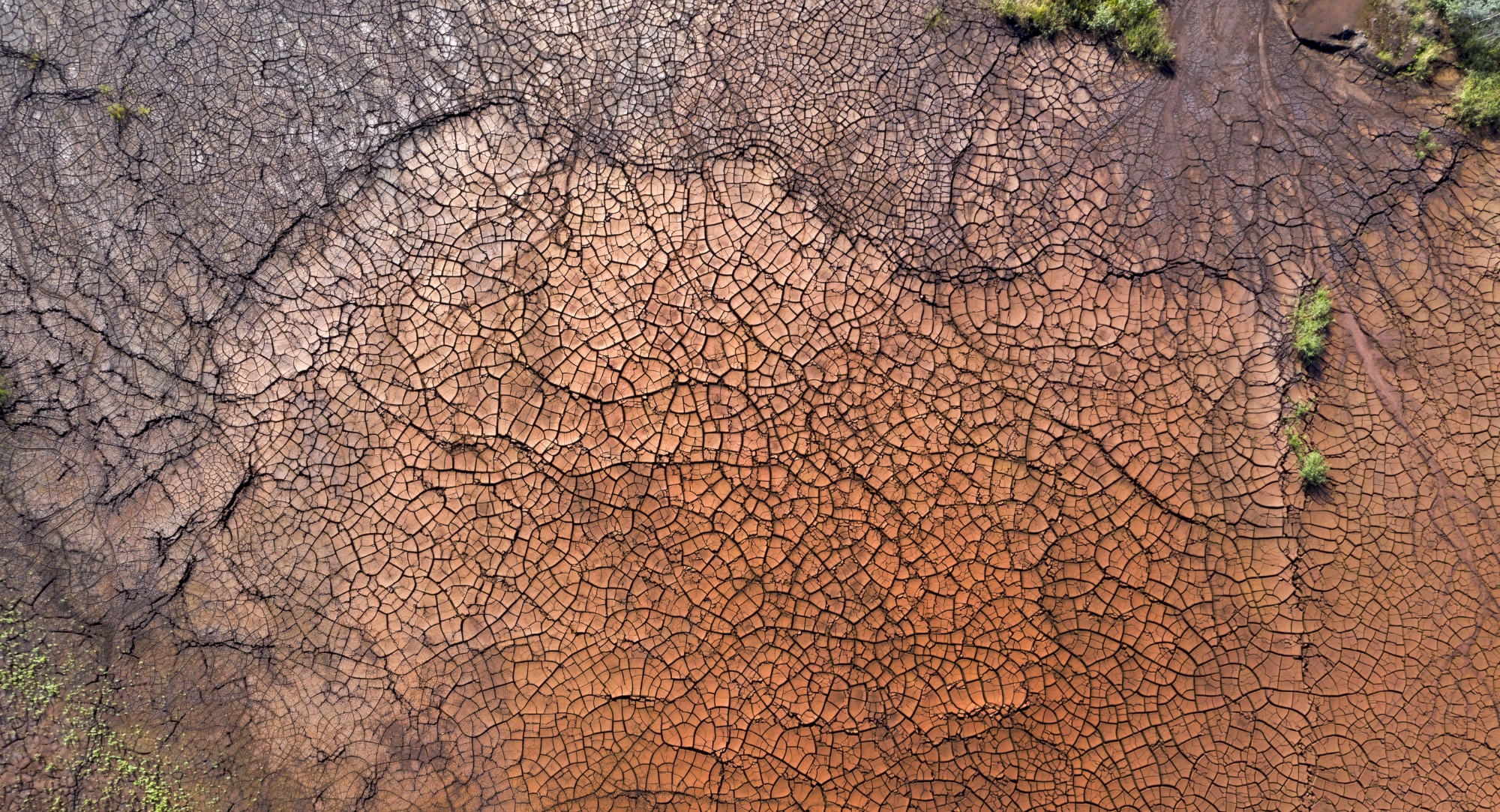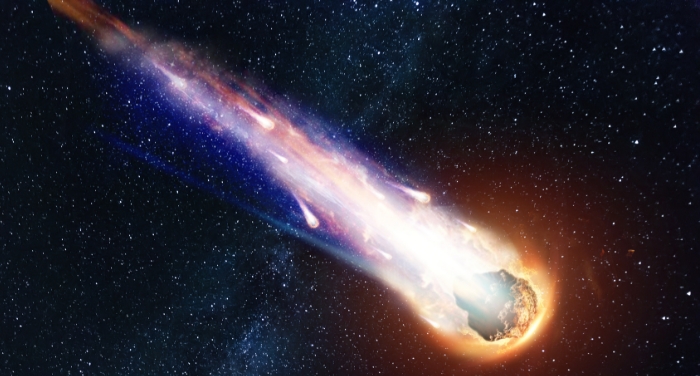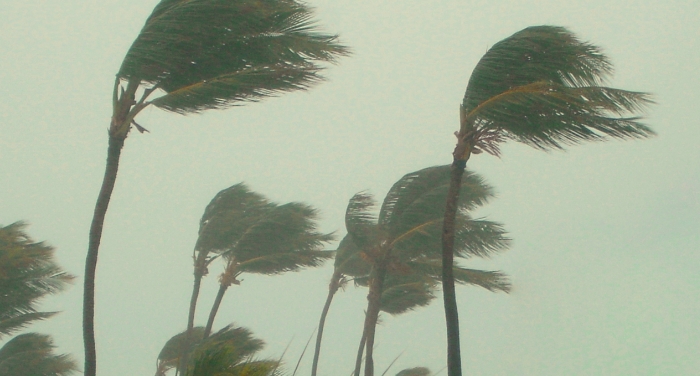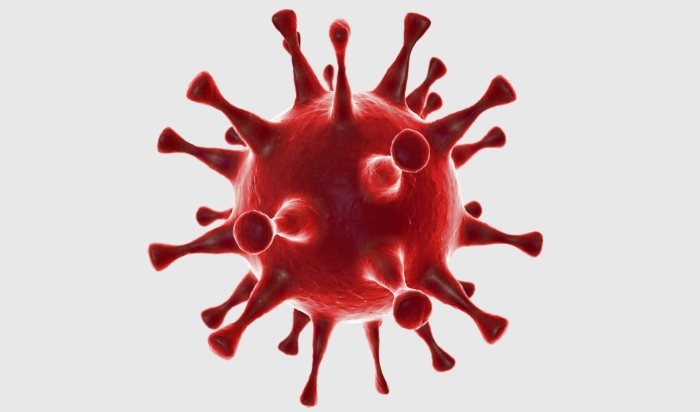
Earth warming by just a couple of degrees can make some areas unsuitable for habitation or agriculture. (istock/Bim)
UChicago scholars contemplate the end of the world.
It’s reasonable to assume that a class called Are We Doomed? Confronting the End of the World, taught virtually in Spring 2021, might have been motivated by COVID-19.
Yet astrophysicist Daniel Holz, SM’94, PhD’98, and sociologist James Evans had to scramble to add material on the pandemic. Presciently, they had developed the course (part of the College and the Franke Institute’s Big Problems program on matters of global or universal concern) before the emergence of SARS-CoV-2. More than 75 College students, just as presciently, had enrolled.
Evans, the director of UChicago’s Knowledge Lab, and Holz, the science and security board cochair of the Bulletin of the Atomic Scientists, didn’t plan the course with an answer in mind. Nor was the goal “to give the complete accounting of every way that civilization can end,” says Holz. “The main task of the class is not so much in the details as to build awareness that there are existential threats. We should not take the existence of civilization for granted.”
Informed by Holz’s work with the Bulletin, the course covered “headline threats” of nuclear war, climate change, and, increasingly, disinformation. “Then there are a bunch of others that are waiting in the wings,” Holz says, like the rise of artificial intelligence and pandemics, which ended up taking center stage.
Each class featured a guest speaker (scholars from UChicago and beyond) and assignments including articles; movies such as Dr. Strangelove (1964); and novels, including Albert Camus’s The Plague (1947). For the final project, students, alone or in groups, created “one modest object that belongs to this future world.”
The course served as a sort of proving ground for what Holz calls the Existential Risk Laboratory. Still in the planning stages, XLab would help students learn about the risks covered in Are We Doomed? and how they might mitigate these risks—regardless of their career paths.
Viewing the future through the lens of existential risk could empower them, but “one of the big challenges in this is to inform people without leaving them despondent,” says Holz. Based on their final projects—including a “recipe” for clean water—many students seem to have emerged from the class with hope.
Holz and Evans aren’t the only UChicago scholars whose work leads them to think and teach about existential threats. Throughout the University, academics in a range of disciplines are confronting the possibility of the end of the world: how we define it, how we can stave it off, and how we might rebuild after catastrophe.
But first, what might doomsday look like?

Humanity is no more
The Cretaceous-Tertiary Mass Extinction event that wiped out the dinosaurs and half of all species 65 million years ago was probably caused by an asteroid or comet hitting Earth. A sensational—and highly marketable—prediction is that the human species might meet the same fate.
Planetary scientist Fred Ciesla isn’t worried; scientists continuously monitor for approaching space rocks and have practical solutions. Last fall NASA scientists intentionally slammed the Double Asteroid Redirection Test (DART) spacecraft into a nonthreatening asteroid moonlet and changed its orbit by 33 minutes. “That’s all it would take,” says Ciesla. If we saw an asteroid that posed a threat in a century, “a little nudge now would, over the course of a hundred years, lead to it being no more than a distant passerby.”
In his role at the Bulletin of the Atomic Scientists—the independent organization founded in 1945 by UChicago scientists that sets the hands of the Doomsday Clock—astrophysicist Daniel Holz is more concerned that nuclear war is humanity’s ultimate threat. This year the Doomsday Clock was set to 90 seconds to midnight, ten seconds closer than last year—the closest it has ever been. Concerns about the war in Ukraine dominated the decision, says astrophysicist and former Bulletin science and security board chair Robert Rosner.
Those old enough to remember the Cold War were steeped in the consciousness of a looming World War III. In the 1950s Americans built backyard bomb shelters, and into the 1980s movies like The Day After or WarGames, both released in 1983, shaped perceptions of an imminent nuclear threat. Holz would sometimes start public lectures by asking who was worried about nuclear Armageddon: “The only people who ever raised their hands were people who had been alive during the Cuban Missile Crisis.”
The danger of nuclear war, beyond the immediate destruction from bomb blasts, is twofold, says Rosner. Radioactive materials would contaminate agricultural land and, even more perilously, a war could trigger a nuclear winter and mass famine. “If you generate huge fires, especially in urban settings, and you put enough soot in the atmosphere to block sunlight sufficiently, you kill agriculture all over the entire world,” he explains.
“We’re arguably at a unique time in history,” says Holz. The ability for global destruction via nuclear war or rapid climate change is an extremely recent development in the time frame of human civilization. A thousand years ago, a hundred years ago, he says, we couldn’t have wiped out all of humanity through our own actions.
But would a third world war extinguish every human life? “That would require a truly concerted, conscious effort,” says evolutionary biologist and paleontologist David Jablonski. “As a biological species, we’re hard to kill. We see from past extinction events in the fossil record that one of the factors that most promotes survival in the face of perturbations is broad geographic range, and we have people living from McMurdo Sound in Antarctica to high up in the Himalayas.”
A genetically engineered superbug could lead to extinction, but human immunological variability makes that chance slim. What we can do—with great competence—is destroy our own quality of life. That’s what he’s most concerned about: “not the extinction of the species but the misery.” That requires its own set of countermeasures.

Humanity marches on in misery
Climate change is a truly global threat already demonstrably affecting people and all forms of life. But the planet warming by two degrees won’t kill our species, says Elisabeth Moyer, an atmospheric scientist and coprincipal investigator of the Center for Robust Decision Making on Climate and Energy Policy (RDCEP). The Center—a partnership between UChicago and several universities and national laboratories—was established in 2010 to address climate change and energy supply challenges and to help policy makers deal with “deep and pervasive uncertainty.”
Global warming will, however, flood coastlines, intensify severe weather, and increase heat waves, droughts, and wildfires. A couple of degrees can make some places unsuitable for habitation or agriculture. Some areas will be able to adapt, but resources are “appallingly unevenly distributed,” says Jablonski, who teaches a College class on biological evolution.
Populations with no recourse will become “climate refugees,” says Moyer. Climate change “disrupts everything we do in ways that we’ve not really even considered yet.”
One method of mitigating climate change is simple (but not easy): reduce CO2 emissions. “We had this phase where we burned a lot of fossil fuels, and that helped us build our civilizations,” says Moyer. “That was what we needed to do, and now we need to stop doing that because we have other technology.”
Such a transformation won’t be fast because our energy infrastructure is enormous, says Moyer. One of her projects brings together scientists and historians to analyze how our energy system has evolved over 200 years, and to help people see how those changes happened—in hopes that “the incremental steps we might take going forward” don’t seem so daunting.
In the past decade, “we’ve undergone an energy transition that is as significant as any in history,” she says. “You just didn’t notice because it changes the way your electricity is made, but you plug the same appliances in.” Yet more than half of the coal mines in the United States have closed, their fuel replaced by gas, wind, and solar power.
Historical context can help us “not just wring our hands about existential threats,” says Moyer, or fixate on an imaginary impossible solution, but instead treat “supposedly distant, complicated, and large-scale problems realistically and practically.”
Looking to the past offers perspective on the threat of disease, as well—particularly when we are still in the midst of a global pandemic. People living through the Black Death during the mid-1300s truly believed it was the end of the world, says Michael Rossi, a historian of medicine. They “would write things like, ‘if there’s anyone even left to read this, this is my account.’”
Plague is accompanied by radical social breakdown, says Rossi. “You almost always get accounts of people being unable to maintain social ties, whether it’s not enough healthy people to bury the dead or perform death rituals.” The instability leads to further hardship, such as starvation.
“We saw mild—and less mild—forms of this during COVID,” he says. In the United States, some communities have continued to experience higher rates of morbidity and mortality, the “disease exposing existent cracks in our social structures that we knew were there.”
Rossi teaches a course on ancient medicine. He hopes his students learn that “the world in the past was very much a matter of rich decision-making rather than just bumping around in the dark,” he says. “Or conversely, that we’re also bumping around in the dark. We just don’t know it.” He also hopes students gain a sense of optimism, with a tinge of humility, learning that they can bend history through vigilance and action.
While Rossi looks back, Holz looks forward: “COVID was just a baby practice pandemic compared to what might be in store” and the misery it could bring. And Jablonski adds, “Clearly, we’ve had rubbed in our face how badly we handle emerging diseases.” America’s—and the world’s—response to COVID was influenced by scientific, cultural, social, and emotional factors, but it was also complicated in a new way: by misinformation and disinformation spread by the internet.

Humanity on hard mode
The path from nuclear war to nuclear Armageddon is clear, but it’s not as easy to extrapolate the danger of inaccurate misinformation and intentionally misleading disinformation. Holz calls disinformation a “threat multiplier”—an added dimension of difficulty for a society trying to save itself.
“It undermines rational discourse,” says Holz. “We have to agree on facts, on basic aspects of the world around us” to have any hope of making progress. We must agree that the earth is round, climate change is happening, and COVID exists before we can even consider addressing more nuanced threats.
Moyer has worked in climate science for two decades, so she’s no stranger to disinformation. Climate change denial makes sense to her: the forces driving it can be traced back to the industries and people whose profits suffer from energy transformation efforts. But the goals of those who deny COVID, for instance, are broader—harder to pinpoint and thus harder to combat. “That to me is the scariest thing right now in our society.”
“It gets fundamentally in the way of fixing anything,” says astrophysicist Rosner, who cites disinformation as his topmost concern. “There’s an epidemic of skepticism of expertise and science,” and it infects everything, Rosner says. “The internet has really made it worse, and we don’t know how to regulate the internet.” He is particularly worried about a pending lawsuit in federal court that attempts to classify mis- and disinformation as political speech protected by the First Amendment.
A 2019 article in the Bulletin of the Atomic Scientists called misinformation and disinformation “cyber-enabled information warfare”—both a multiplier of existential threats and a threat in its own right. “Corruption of the information ecosystem,” it reads, poses “the possibility of a global information dystopia, in which the pillars of modern democratic self-government—logic, truth, and reality—are shattered, and anti-Enlightenment values undermine civilization as we know it.”
Ciesla, who teaches the College class Earth as a Planet: Exploring Our Place in the Universe, says that his job has changed over the years to include confronting mis- and disinformation.
In addition to teaching planetary science, he also focuses on information literacy: the ability to seek, evaluate, use, and create information effectively—a skillset immeasurably complicated by the ease with which anyone can post anything on the internet. His message goes beyond literacy to understanding how our decisions based on information can affect other people, and how other people’s decisions affect us, he says: “It’s not just us working, living in isolation.”
